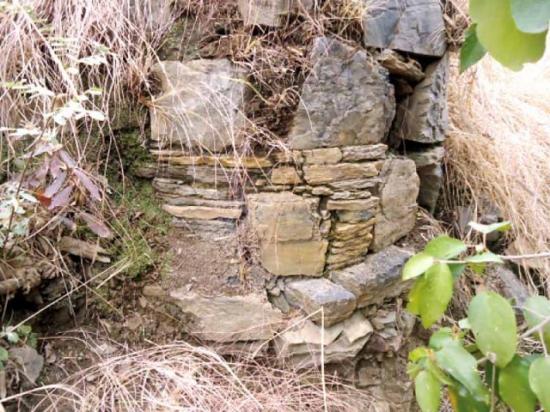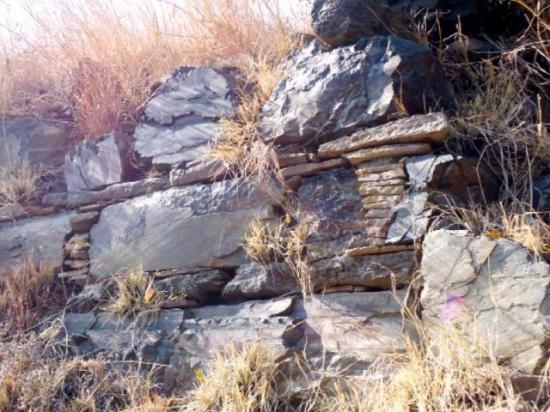Heritage in ruins: Remains of a Buddhist monastery discovered
Shazia Mehboob
Source - http://tribune.com.pk/story/344102/heritage-in-ruins-remains-of-a-buddhist-monastery-discovered/

PHOTO: SHAZIA MEHBOOB
An archaeological site possibly linked to the Gandhara civilisation has been discovered near a village in Mansehra.
Spread over a deserted hillock near Karer village, some 26 kilometres from Mansehra, the site is believed to be the ruins of a Buddhist monastery, built between the first and third century AD.
A visit to the site by The Express Tribune revealed that the monastery, having over 16 pillars, has been nearly destroyed due to negligence of the archaeology department.
The foundations of its walls indicate that the monastery had multiple rooms. The walls, approximately 3.5 feet wide, are built from rugged stones. The remains feature the specific style of construction commonly found in Buddhist sites.

PHOTO: SHAZIA MEHBOOB
In addition, two tunnels in the hillock also suggest that the site was used for meditation.
Archaeologists’ perspective
According to the archaeologists, this site was occupied by a host of rulers, including Buddhists, Sikhs and Muslims. They believe Buddha used the site as a monastery and with the end of Buddhists era, the area came under the rule of Sikhs until they were defeated by Muslims.
It is believed the site was used as a fortification by Muslims due to its ideal location to keep an eye on the surrounding area. Quaid-i-Azam University Taxila Institute of Asian Civilisation Director Dr Muhammad Ashraf said the structure consists of stupas and monastic areas built in rubble, featuring diaper and semi-diaper masonry, while talking to The Express Tribune.
“The Buddhist monastery is built on the same pattern as that seen in other places, such as Jaulian in Taxila and Zar Dheri and Jinnan Wali Dheri in Hazara division,” he explained, adding that similar sites have been found in Swat, Dir and Buner.
Ashraf pointed out that the monastery was erected during the Kushan period and needs systematic excavation for preservation.
He also revealed that almost 800 archaeological sites were discovered in the area between 2005 and 2008, when Hazara University Mansehra (HUM) conducted a survey in Hazara division.
This is a fortified town for a limited community; the fortification’s walls in diaper masonry were built in the late Buddhist period, around the 5th century AD, said Shakirullah Khan, an assistant professor at HUM.
The fortification wall has bastions at regular intervals. The total covered area is about 160 X 60 feet. There is some residential construction on the side as well.
The fortification’s walls have been reconstructed in simple dry masonry, which is a reminder that the site was occupied till late by Muslim rulers. He, however, regretted that the site is in ruins.
“This monastery is of great importance for cultural heritage and requires immediate attention to save it from further decay,” he said.
“If it is properly excavated, it can become one of the most important heritage sites for tourists and historians due to its close proximity to the Karakoram Highway,” he added.
He said Hazara division, especially Mansehra has a rich cultural heritage, such as Asoka’s rock edicts and steppe sites from the Kushan period. Indo-Greek and Scythian coins have also been unearthed from the area.
Locals’ views
According to a local resident Arshad Ahmed, the monastery has been present since the past 200 years, when his forefathers migrated to the village.”
This area served as a battlefield for Muslims and Buddhists. Local people have always believed the site was used as a place of worship by Buddhists,” he said.
While referring to the hillock, commonly known as Kot, he said it is used to describe the three hillocks in the area. The hillocks are situated close to each other so that people can easily communicate from their peaks.
He also stressed on the possibility of similar sites on other hillocks which may have been completely destroyed due to negligence.